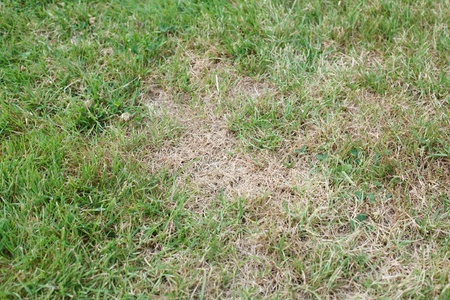
So you’ve diligently cared for your lawn, mowing and weeding and watering to keep it looking its very best, but you still notice brown patchy areas marring your otherwise well-manicured grass. You’ve adjusted your watering cycle to make sure your lawn is well hydrated, but it still exhibits symptoms of drought. If this struggle sounds familiar, your lawn may have fallen victim to a chinch bug infestation.
Chinch bugs are small (less than ¼”) black insects with characteristic white stripes that run the length of their bodies. Because they are so small they are often difficult to spot, but the damage they leave behind is easy to see. Chinch bugs have mouths similar to mosquitos that allow them to inject grasses with a poison and then suck them dry for their nutrients. There are a number of subspecies of the chinch bug; here in Massachusetts, the hairy chinch bug is the most common variety.
If you think you might have a chinch bug problem, you can use a simple experiment with a tin can to find out for sure. Cut both ends of the can off so that it’s an open cylinder, and then push one end of the can into the soil in your lawn. Fill the can with water, and then wait. If your lawn has chinch bugs, in about ten minutes you should see them start to float to the top of the water. You may also see juvenile chinch bugs which will be red rather than black.
Once you confirm the presence of chinch bugs, consult your local lawn center in order to determine the best treatment option for the infestation. Unfortunately, Chinch bugs have become resistant to certain insecticides, so you might have to try a few options before you see positive results. Talstar, an insecticide that is relatively safe for use around non-target animals, tends to work well for controlling chinch bug populations.
At Suburban Lawn Sprinkler, we’ve been keeping your grass green since 1962. Give us call today to learn more about how our irrigation systems can save you time and money on lawn maintenance.
[msh_feedburner]








